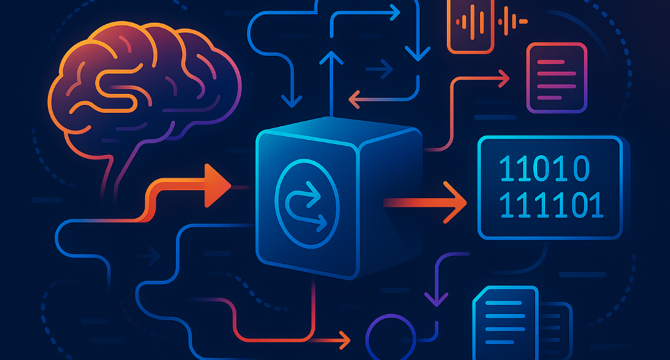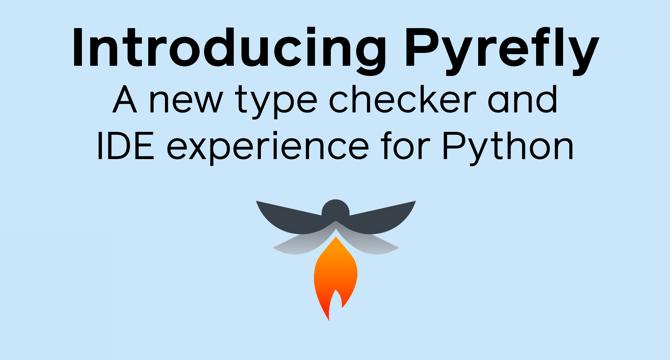Python
PlanetPython
1M
260

Image Credit: PlanetPython
The Python Coding Stack: The Chores Rota (#3 in The `itertools` Series ��� `cycle()` and Combining Tools)
- Yteria and Silvia argue about chores daily, leading Yteria to plan a rota for fairness.
- Yteria lost the ability to use the word 'for' in programming due to a unique circumstance.
- Yteria utilizes itertools.cycle() to create infinite sequences from lists of chores and names.
- The create_infinite_sequence() function Yteria considers is compared to itertools.cycle().
- itertools.cycle() is preferred for ease of use, readability, and versatility with different data types.
- Efficiency comparison shows itertools.cycle() outperforming a custom generator function.
- Yteria combines iterators with zip() to pair tasks and people for a chore rota.
- Yteria uses itertools.count() and while loop to display daily rotas, as she couldn't use a for loop.
- The article showcases the power of itertools in combining iteration tools for efficient solutions.
- Yteria and Silvia resolve their chore conflicts using Pythonic iteration techniques.
Read Full Article
15 Likes
Medium
1M
355

Clean Code Practices in Python
- Variable names should clearly express the purpose or the data it holds.
- Docstrings explain the what, why, and how of a function.
- Comments should explain why something is done, not what (which should be evident from clean code).
- Break down your code into small, reusable, independent modules.
Read Full Article
21 Likes
Medium
1M
256

Image Credit: Medium
How Gradient Descent Actually Works — Explained Simply (with Python & Visuals)
- Gradient descent is explained simply using a hill analogy where the goal is to find the lowest point in the landscape by taking cautious steps in the downhill direction based on the slope beneath your feet.
- In machine learning, gradient descent is used to minimize a 'loss' function, tweaking the model's parameters to reduce the error.
- The article explains implementing gradient descent from scratch in Python without libraries like Scikit-learn, using NumPy and matplotlib for visualization.
- The entire implementation with raw data visualization, normalized data, loss curve, best fit line, and animations can be found on GitHub, highlighting the importance of gradient descent in machine learning and deep learning.
Read Full Article
15 Likes
Javacodegeeks
1M
98

Image Credit: Javacodegeeks
[FREE EBOOKS] Modern Generative AI with ChatGPT and OpenAI Models, Offensive Security Using Python & Four More Best Selling Titles
- Modern Generative AI with ChatGPT and OpenAI Models book provides insights into the inner workings of language models, use cases, and enterprise-level scenarios for leveraging AI APIs.
- Offensive Security Using Python offers practical guidance on offensive tactics, threat mitigation, and how to use Python for web security and automation.
- Leadership Revolution focuses on developing dynamic leaders for the 21st century, offering strategies to accelerate professional growth and adapt to remote work environments.
- Hands on Hacking is a comprehensive guide to offensive hacking techniques, providing real-world examples and skills for breaching networks and improving security.
- AI First, Human Always explores the trends in AI and how to merge technology with human qualities like creativity and intuition for effective leadership in the AI era.
- Bulletproof Problem Solving introduces a systematic approach to problem-solving, utilizing a visual, logic-tree method to tackle complex issues and develop compelling solutions.
- The collection of eBooks covers a range of topics from AI and cybersecurity to leadership and problem-solving, offering valuable resources for professionals to enhance their skills.
- Readers can access these best-selling titles for free for a limited time, providing a chance to learn and advance in various IT-related fields.
- By leveraging these resources, individuals can expand their knowledge and expertise in areas such as AI, cybersecurity, leadership development, and problem-solving.
- Subscribe to the newsletter for more insights and free eBooks on Java and IT-related topics to continue enhancing your skillset.
Read Full Article
5 Likes
Discover more
Medium
1M
382

Image Credit: Medium
Build an AI That Remembers: Step-by-Step Intro to RNNs and Word Prediction with Python
- AI systems can sometimes forget important context, leading to errors and misunderstandings.
- Understanding the order of events is crucial in various tasks such as language processing and behavior analysis.
- Traditional neural networks struggle with sequences and lack the ability to retain information over time.
- To address this issue, researchers developed Recurrent Neural Networks (RNNs) that can maintain internal memory of past inputs for better sequence processing.
Read Full Article
23 Likes
Dev
1M
369

Image Credit: Dev
Introducing a new command to the Python Polylith tool
- The Python tools for Polylith Architecture have introduced a new command called poly test, which includes a sub-command poly test diff.
- Polylith is an architecture that supports having multiple Microservices in a Monorepo and allows code sharing between services.
- The poly test command helps identify bricks and projects affected by changes in tests, similar to the existing poly diff command.
- This new command provides a structured way to identify affected bricks and projects when automated tests are updated.
Read Full Article
22 Likes
Medium
1M
27
Image Credit: Medium
Python Project Structure: Why the ‘src’ Layout Beats Flat Folders (and How to Use My Free Template)
- A clear, repeatable folder structure is crucial for Python projects to avoid 'import hell' and ensure a predictable workflow.
- The 'src' layout, where all importable code is placed in a src/ folder, is recommended for medium-to-large apps and projects that ship to production.
- Placing code under src/ helps prevent import conflicts, keeps PyPI uploads clean, allows for easy package uninstallation, and provides clarity as the project grows.
- While a flat layout is suitable for small scripts and demos, transitioning to a src layout early can prevent refactoring difficulties in the future.
Read Full Article
1 Like
Dev
1M
211

Image Credit: Dev
Shallow Copy & Deep Copy in Python
- Variable assignment in Python can result in shallow copy or deep copy.
- Shallow copy creates a new object but references the same elements as the original object.
- Deep copy creates a new object and recursively adds copies of nested objects.
- Methods like .copy(), deepcopy() and list() can be used for creating shallow or deep copies in Python.
Read Full Article
12 Likes
Dev
1M
58

Image Credit: Dev
Variable assignment in Python
- Python allows assigning one or more values to one or more variables.
- String type values cannot be changed directly, but list() and join() can be used for such operations.
- Variables in Python can hold references to lists, changing one list can affect other variables referencing the same list.
- Assigning multiple values with commas creates a tuple in Python.
Read Full Article
3 Likes
Dev
1M
157

Image Credit: Dev
How AI and Python Helped Modernize a Legacy Insurance System
- Modernizing a legacy insurance system with AI, APIs, and Python automation was achieved by tackling a manual claims processing workflow in a real-world insurance company.
- The legacy challenge included manual processing leading to delays, errors, and dissatisfied customers, with industry-wide errors costing US insurers billions yearly.
- The solution involved integrating AI for document processing and claim triage through a new microservice, extracting data, AI analysis for claim categorization and red flags, and integrating results back into the legacy system via API.
- Python was chosen for its AI libraries, HTTP capabilities, and ease of integration, utilizing existing AI models like Hugging Face's Transformers for zero-shot classification.
- Implementation involved automating claim triage using AI classifiers, with periodic processing of new claims, automated classifications, and updates to the legacy system through API calls.
- Challenges encompassed data quality, model tuning, system integration issues, and ensuring fairness and transparency in automated decision-making, with human oversight critical in sensitive domains like insurance.
- Results included a 70% reduction in processing time, improved accuracy in claim handling, cost savings from fraud detection, and positive feedback from customers and management on efficiency gains.
- Key takeaways include starting small, leveraging existing tools, minding data quality, keeping humans in the loop, and emphasizing transparency and monitoring for successful AI integration in legacy projects.
- The project showcased how modernizing legacy systems with AI and automation can enhance efficiency, accuracy, and customer satisfaction while laying the foundation for broader digital transformation.
- Developers are encouraged to share their experiences and challenges in injecting AI/automation into legacy projects to foster learning and innovation in the field.
- The journey of modernizing legacy systems is a blend of innovation and pragmatism, offering opportunities to make a significant impact while respecting existing constraints and leveraging new technologies.
Read Full Article
9 Likes
Dev
1M
9

Image Credit: Dev
Code Less, Prompt Better: Unlocking Python's Built-in LLM Enhancers
- In the realm of Large Language Models (LLMs), effective prompt engineering is essential, and Python's built-in tools can streamline this process.
- Using locals(), Python can dynamically inject context into prompts based on local variables, reducing errors and improving code cleanliness.
- The inspect module enables the extraction of function metadata for more informative prompts, enhancing the understanding of function behavior.
- Class attributes in Python can be leveraged for context management in LLM interactions, simplifying conversation history tracking and prompting.
- By using dir(), developers can explore object attributes dynamically, facilitating more accurate and detailed prompts.
- String manipulation methods in Python help clean and normalize text data for optimal performance in LLM applications.
- Python's features empower developers to create adaptive and context-aware LLM applications with efficient and maintainable code.
- These techniques scale effectively for complex LLM applications, supporting advanced prompt engineering with reduced complexity.
- Python's built-in functionality makes it easier to enhance LLM interactions, whether for chatbots or advanced AI assistants.
- Enhancing LLM prompts with Python's capabilities allows for more effective and error-resilient interactions with increased adaptability.
Read Full Article
Like
Dev
1M
225

Image Credit: Dev
Python Variables Explained for Beginners
- Python is a popular programming language known for its wide range of libraries that make tasks faster and easier.
- The random library in Python allows users to generate random numbers or make random choices, simulating real-life randomness.
- Variables in Python are similar to jars in a kitchen shelf, where each variable stores data that can be accessed later.
- In the upcoming articles, different types of variables in Python and best practices for naming them will be discussed.
Read Full Article
13 Likes
Towards Data Science
1M
118

Understanding Random Forest using Python (scikit-learn)
- Decision trees are a popular supervised learning algorithm, but are prone to overfitting, leading people to use ensemble models like Random Forests.
- Bagging involves creating multiple training sets from the original dataset by bootstrapping and aggregating multiple decision trees.
- Random Forests differ by randomly selecting features at each decision node, reducing overfitting and improving generalization.
- Random Forests utilize sampling with replacement for bootstrapped datasets and sampling without replacement for feature selection.
- Out-of-Bag (OOB) evaluation allows estimating generalization error by excluding some training data from each tree.
- Training a Random Forest includes creating a baseline model, tuning hyperparameters with Grid Search, and evaluating the final model.
- Feature importance in Random Forests can be calculated using Mean Decrease in Impurity or Permutation Importance methods.
- Visualizing individual decision trees in a Random Forest can illustrate how differently each tree splits the data.
- Random Forests remain popular for tabular data analysis due to their simplicity, interpretability, and parallelizability.
- The tutorial covers bagging, Random Forest differences, training, tuning, feature importance, and visualization using Python with scikit-learn.
Read Full Article
6 Likes
Fb
1M
64

Image Credit: Fb
Introducing Pyrefly: A new type checker and IDE experience for Python
- Pyrefly is an open source Python type checker and IDE extension written in Rust, focusing on ensuring type consistency and catching errors in code before execution.
- It offers IDE integration and CLI usage for flexibility in workflow integration.
- Developed in the open source community, Pyrefly aims to enhance Python's type system and libraries collaboratively.
- Key steps to get started with Pyrefly include installing it via pip, migrating existing type checker configurations, and downloading the VSCode extension.
- The project Pyre led to the creation of Pyrefly, with a focus on an extensible type checker that provides code navigation, scalability, and exporting types.
- Pyrefly emphasizes performance, built in Rust for speed, and an IDE-first approach for consistent user experience.
- The project also focuses on inference to benefit users from types even in unannotated code, promoting an open-source community and open development on GitHub.
- Future plans for Pyrefly involve working with the Python community to enhance the language and developer experience, leveraging types for productivity and security.
- Community collaboration is encouraged through feedback, bug reports, and contributions to further develop Pyrefly and expand its impact.
- The release of Pyrefly as an alpha version is aimed at refining it for a stable release in the future, with an invitation for feedback and improvement suggestions.
- The Meta team behind Pyrefly aims to illuminate bugs, enhance the Python development environment, and engage with the community through various platforms.
Read Full Article
3 Likes
For uninterrupted reading, download the app